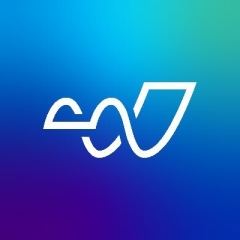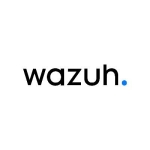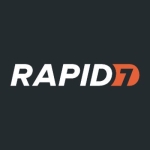What is most valuable?
The ability to threat-hunt and, being a small staff of five people, we can actually not put a lot of time in administration, the care and feeding of it, and get useful analytics out of it.
How has it helped my organization?
We have two facilities, roughly 500 logs per second. Microsoft shop, Cisco stack on the networking side. We run two FortiGate firewalls, and a slew of different security products that we have not integrated into LogRhythm.
We haven't seen the improvements yet. We bought it as a compliance tool, and it's still sitting there. It's part of the reason why came to the LogRhythm User Conference, to figure out what our next steps are. When we had to tackle PCI compliance, one of them was log aggregation, and so that was why we brought it in.
It's met all of our compliance issues, really easy to do. As I said, there's not a lot of admin overhead, so it doesn't cost an FTE for us, which is nice. I think the added benefit is when we start using it for actually doing some analytics and in increasing our security posture, we're just not there yet.
What needs improvement?
I can't think of any features they should add because we haven't used everything they've already released. They have Office 365 logs integration. They've got this new phishing engine that we haven't used. They've got dashboards we haven't used, so we're basically right at the very bottom, we need to start building with what they're already doing.
In terms of improvement, their community boards, where to go find things, as a customer. As they're growing and they're moving stuff around, and it would be nice if we knew exactly where to find what. They're constantly reinventing how they do things and where they put stuff, that's the one challenge I've run into. I've always found the answer when I got to the right person: "Yeah. That's over here now," but I know other customers have shared that same issue.
What do I think about the scalability of the solution?
Being a small shop, we're in an XM, everything in one appliance, which is really easy for administration, but I think it can get more complex as you get bigger. They've scaled to really large Fortune 500 companies, so that's nothing that we're worried about.
How is customer service and technical support?
Great, you have almost the service-desk model, where you're going to get a live person. They're going to answer the call. They're going to make sure you get routed to the proper team. They're really good at followup, when "Everybody's busy now," they're really good at scheduling times, when both the technical agent is available and our staff is available, which I really appreciate. You don't have those, "I tried to get a hold of you," going back and forth. Not a lot of vendors understand that. LogRhythm does a good job with that.
How was the initial setup?
It's straightforward, to the point that we brought it. We did a week of engagement with our security value-added reseller, and we were basically shoulder surfing. Everything looked like it made sense and why they were doing it, and it's not that complicated.
Where it can get more complicated, like I said, is if you're a big organization, you didn't have it all on one platform. Those components would have to be put together, and there can be a little bit more to the infrastructure.
The SIEM's a very technical tool, but LogRhythm - that's one of the beauties of it - once you figure out how it's installed, the care and fitting of it, the updating of the SIEM to new versions, and even the monitor agents, it's really pretty straightforward. Good documentation.
Which other solutions did I evaluate?
ArcSight and Splunk, and that was it.
We went with LogRhythm because of cost, administration, and ease of use when you're in the tool. Those are the top three. The fact that it was the lowest cost one, easiest to use, and easiest to administer. It was a no-brainer for us. It wasn't even really a conversation, other than the fact that we have to shop at the three different vendors.
What other advice do I have?
Right now our focus is on user behavior, and that's part of why we joined the cloud Beta, they are our biggest risk. We don't know what they're going to do when and why, and so we've rolled out some security awareness training, we've rolled out some phishing exercises, and really trying to figure out how we can stop them being their biggest risks. Learning about what we learned today at the conference, with LogRhythm doing their phishing intelligence engine, it's going to be nice to see how we can implement that into the SIEM as well.
Security solution, number one is FTE; being a small shop and how much FTE does it take to run that? If that's a challenge for somebody, so they have co-piloting that you can do. We were able to absorb that in with two different FTEs splitting the duties, and they probably spend 45% of the time doing that. Might be different for a bigger shop, but that's our focus.
The most important criteria when selecting a vendor:
- reputation
- have they delivered on what they say they can do
- are there customers out there that we can talk to, that can validate what they're saying is actually true?
Regarding a solution being a unified end-to-end platform, it's not necessarily so important. Going forward, as we mature, more maybe, but we're really just tacking on the stuff that we go after. It's addressing certain needs, it's a little bit siloed right now, so it's not a huge need for us.
I gave it a nine out of 10 because I hesitate to rate anything a 10, that's perfect. But I think they do a great job, and I think it's more on us to really engage them more. They're always happy to talk to us about where we want to go with it, and it's just us dedicating the time to them.
Talk to people in the industry, make sure it can fit those needs you're buying it for. Proof of concept is huge. Do a proof of concept, especially in a SIEM. You don't want to just buy one and then implement it, and then try to figure out is it going to actually work for me?
Disclosure: I am a real user, and this review is based on my own experience and opinions.



















Cost/License should also be part of the criteria, because the capabilities of these solutions depends on how much EPS it is allowed to process. A lot of "events" goes down the drain if its beyond the EPS that customer license so therefore giving it a incomplete view of the network. Some remarketer of these solutions have crimped their proposal just to make a sale. Just my 2 cents.